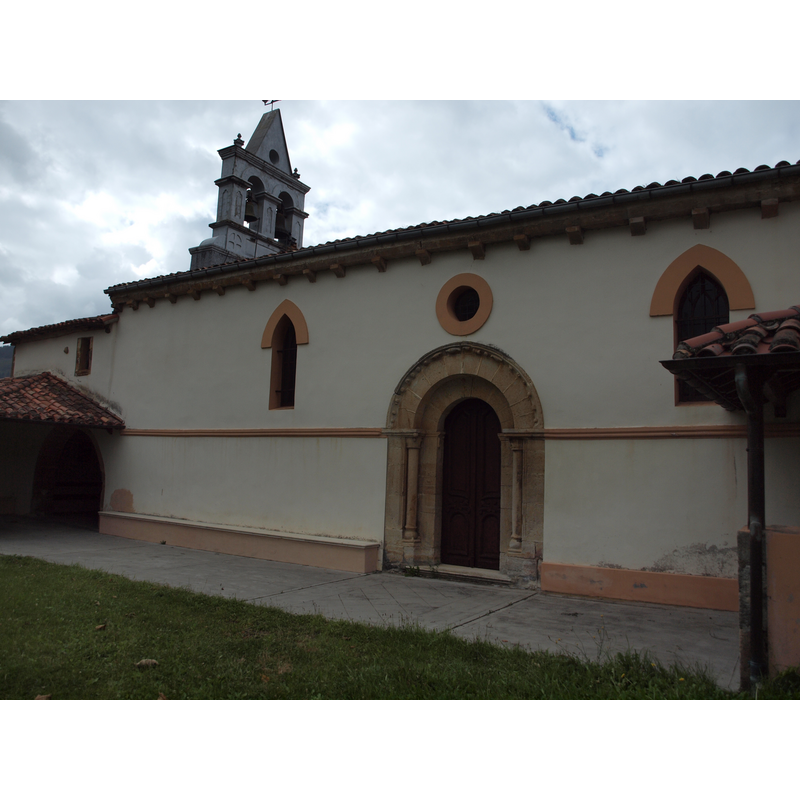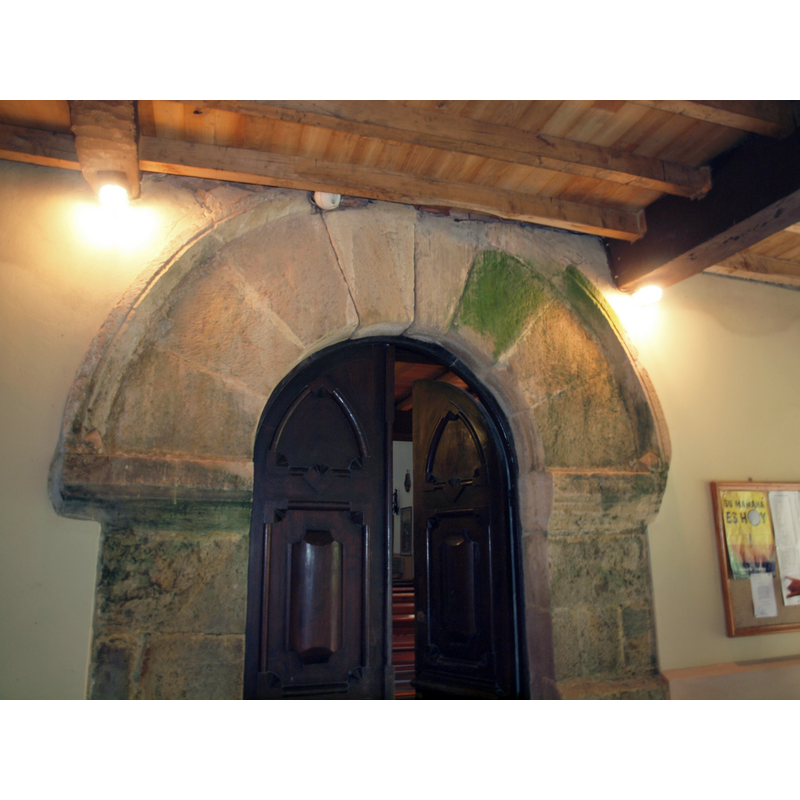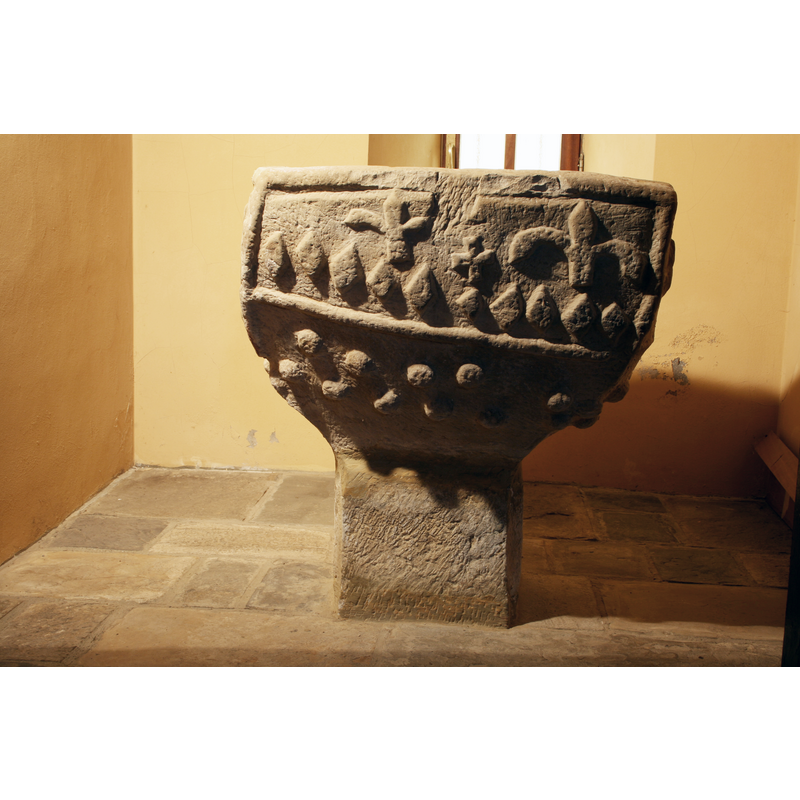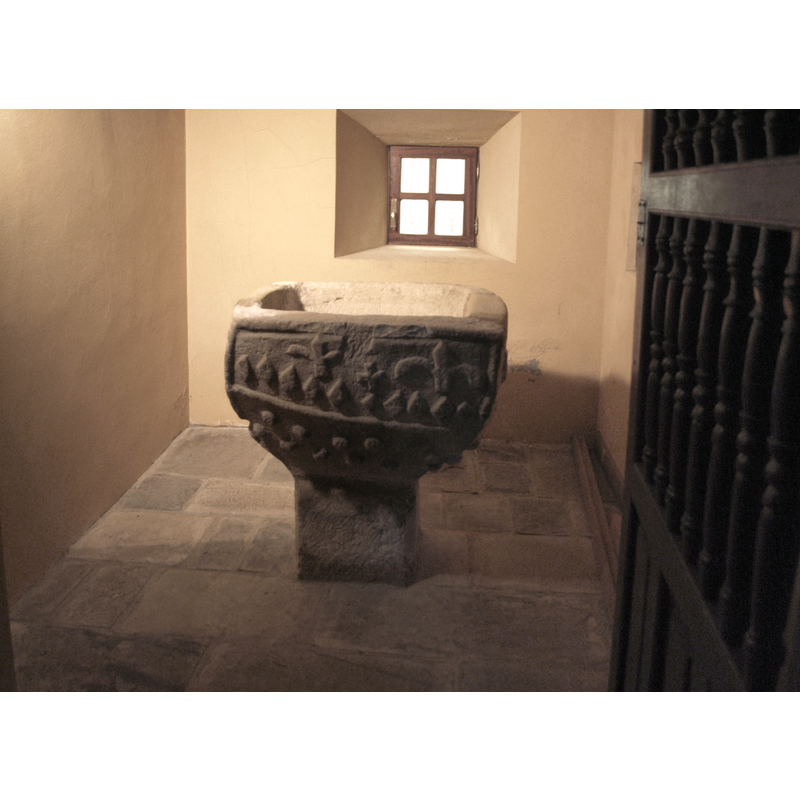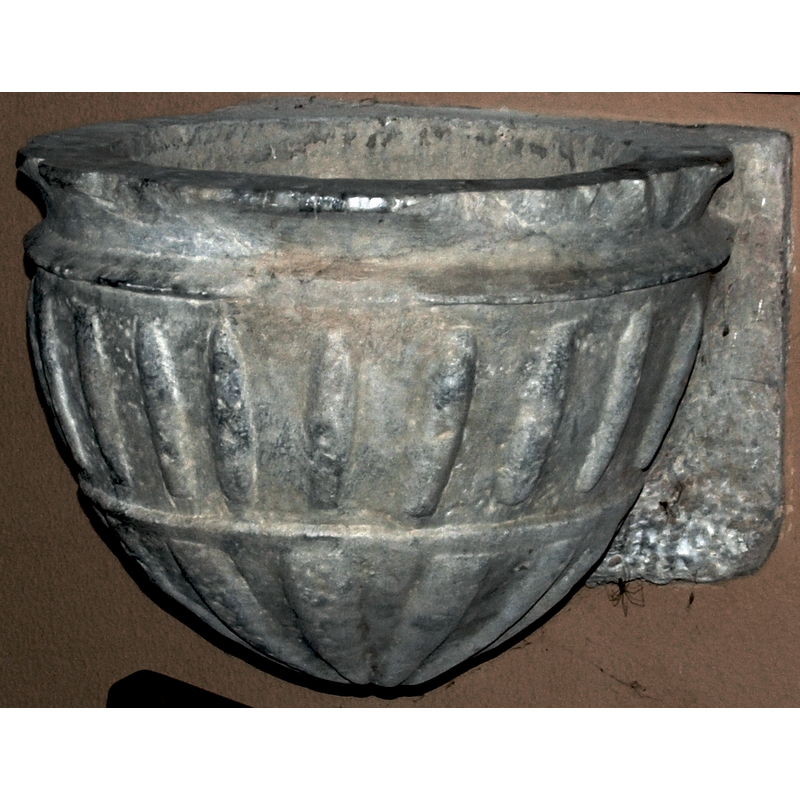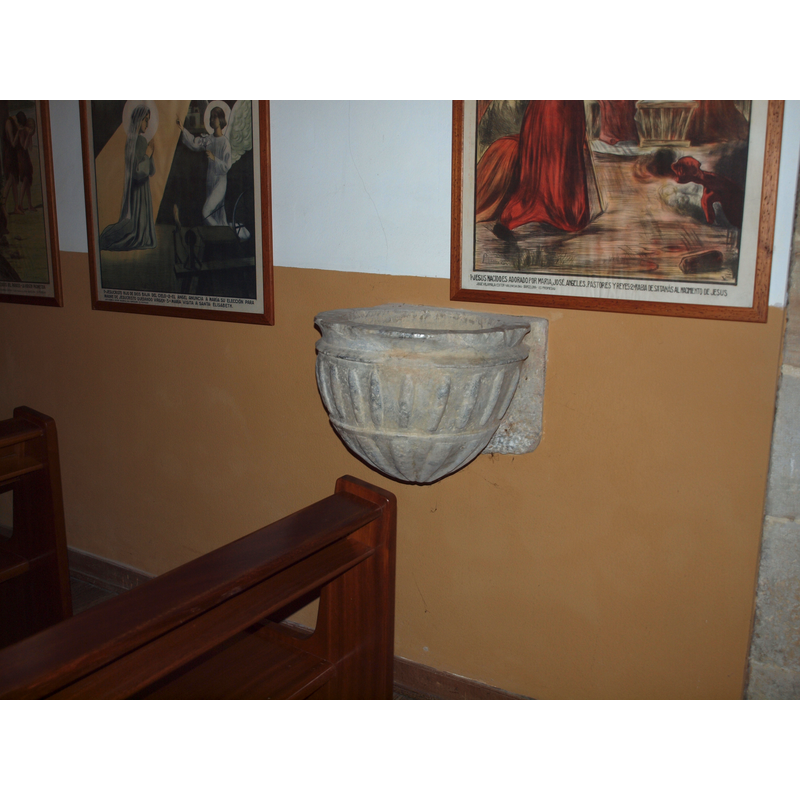Beloncio / Belonciu / San Pedro de Beloncio
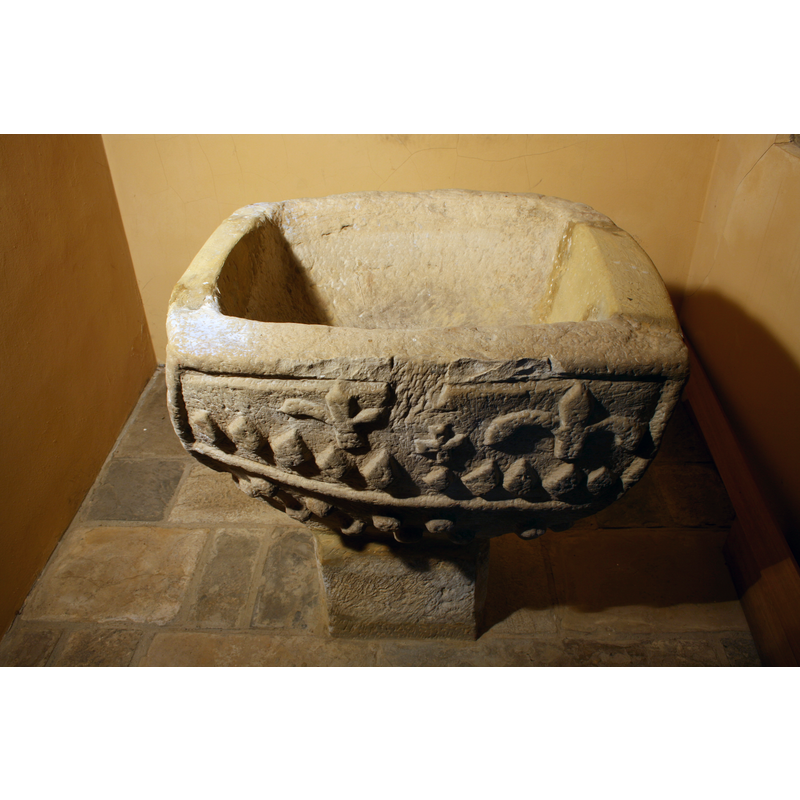
Image copyright © Covadonga Cañas, 2010
Standing permission
Results: 19 records
design element - motifs - ball
Scene Description: on three sides of the underbowl; the fourth side, originally against the wall, is totally blank, both the side and the underbowl
Copyright Statement: Image copyright © Covadonga Cañas, 2010
Image Source: detail of a digital photograph taken 22 August 2008 by Covadonga Cañas
Copyright Instructions: Standing permission
design element - motifs - diamond or lozenge
design element - motifs - floral - fleur-de-lis
Scene Description: upper end is broken and is now covered by the cement repair to the upper side
Copyright Statement: Image copyright © Mikel Unanue, 2014
Image Source: greyscale version of a digital photograph taken 7 July 2012 by Mikel Unanue for BSI
Copyright Instructions: Image and permission received (e-mail of 11 September 2012)
design element - motifs - floral - fleur-de-lis - 2
design element - motifs - rectangle - 7
symbol - cross
symbol - cross
symbol - cross - saltire? or "X" motif?
view of basin - back side
Scene Description: this back side was originally against the wall [cf. FontNotes]
Copyright Statement: Image copyright © Mikel Unanue, 2014
Image Source: greyscale version of a digital photograph taken 7 July 2012 by Mikel Unanue for BSI
Copyright Instructions: Image and permission received (e-mail of 11 September 2012)
view of basin - interior
Scene Description: notice the repairs to the opposite ends of the rim; these were likely damages caused by old cover hardware splitting the stone
Copyright Statement: Image copyright © Mikel Unanue, 2014
Image Source: digital photograph taken 7 July 2012 by Mikel Unanue for BSI
Copyright Instructions: Image and permission received (e-mail of 11 September 2012)
view of basin - left side
view of church exterior - south portal
view of church exterior - southeast view
view of church exterior - west portal
Scene Description: the original west portal is enclosed in a porch that provides access to the cemetery via another door
Copyright Statement: Image copyright © Mikel Unanue, 2014
Image Source: digital photograph taken 7 July 2012 by Mikel Unanue for BSI
Copyright Instructions: Image and permission received (e-mail of 11 September 2012)
view of font
view of font - upper view
view of font in context
view of stoup
INFORMATION
FontID: 05030BEL
Object Type: Baptismal Font1
Church/Chapel: Iglesia Parroquial de San Pedro
Church Patron Saints: St. Peter
Church Location: 33538 Beloncio, Asturias, Spain
Country Name: Spain
Location: Asturias, Principado de Asturias
Directions to Site: Located on the PI-2, in the concejo of Piloña, 5 km from Infiesto, 45 km from Oviedo capital
Ecclesiastic Region: Diocesis de Oviedo
Historical Region: Oviedo
Font Location in Church: Inside the church, in its own baptistery space/alcove
Century and Period: 10th - 11th century, Pre-Romanesque
Cognate Fonts: [cf. FontNotes]
Credit and Acknowledgements: We are grateful to Covadonga Cañas and to Mikel Unanue for their photographs of this church and font
Font Notes:
Click to view
Described and illustrated in Alvarez Martínez (1990) as a baptismal font of the Asturian pre-Romanesque. Described and illustrated in García de Castro (1995). The basin is roughly square, with the sides framed with a thin moulding that clearly separates them from the underbowl; only two of these sides are visible (the font was attached to the wall at the back and the view of the right side was blocked at the time - NB: the font is now [August 2008] free standing); the left side has, on the upper half, a small cross with a large fleur de lis on either side, while the lower half has a row of romboid motifs; another side, contiguous to the previous side, is decorated with seven rectangular motifs on the left half, while the right half has a large "X" motif [NB: the upper surface of this side has been repaired; it is not clear whether or not other motifs existed prior to the repair]; all the carving is in fairly low relief; the underbowl is rounded, and covered with ball motifs scattered all around it without an obvious order. GdeC (ibid.) relates its general shape to the Asturian font of Santa Maria de Villanueva de Teverga, and to the Visigothic (!) fonts of San Isidoro, in nearby Leon, and Gormaz, in Soria. This same author points out that there is no firm dating for either the font or the church itself since, although an entry for 926 A.D. appears in the Liber Testamentorum, its veracity is in question. In a later work, García de Castro Valdés (2000) notes medieval quadrangular fonts in Spain at Beloncio, Bullaso, San Isidoro de Leon, Villanueva de Valdecarzana (suggested date in the 11th century); Armentia, Bustasur, Dosante, Gormaz, Quintanillalabon, Rosales, Santillan del Agua, Soto de Bureba (suggested date in the 12th or 13th century); Ripodas and Turrillas (suggested date in the 13th century). [NB: altough no mention is made of a cover for this font it should be noted that the incision on the upper rim of the left side and the damage on the upper front and back sides are consistent with the presence of a cover and its hardware requirements]
COORDINATES
UTM: 30T 306100 4800224
MEDIUM AND MEASUREMENTS
Material: stone, limestone
Number of Pieces: two?
Font Shape: square (mounted)
Basin Interior Shape: square
Basin Exterior Shape: square
Drainage Notes: no lining
Rim Thickness: 7.5-8.5 cm [calculated]
Diameter (inside rim): 63 x 63 cm*
Basin Depth: 41 cm
Basin Total Height: 69 cm*
Trapezoidal Basin: 78 x 80 cm*
Notes on Measurements: * [García de Castro (1995: 242)]
LID INFORMATION
Notes: [cf Font notes]
REFERENCES
Alvarez Martínez, María Soledad, El románico en Asturias, Gijón: Ediciones Trea, 1999
García de Castro Valdés, César, "Nuevas piezas de arqueología cristiana altomedieval en Asturias", 7 (2000), Revista de Arqueología del Área de Historia Medieval, 2000, pp. [201]-218; p. 209
García de Castro Valdés, César, Arqueología cristiana de la alta Edad Media en Asturias, Oviedo: Real Instituto de Estudios Asturianos, 1995
Múñiz López, Iván, "La pila bautismal de tradición prerrománica de Castrillón (Asturias): el control señorial del bautismo", 2 (2007), Territorio, sociedad y poder, 2007, pp. 265-274; p. 273
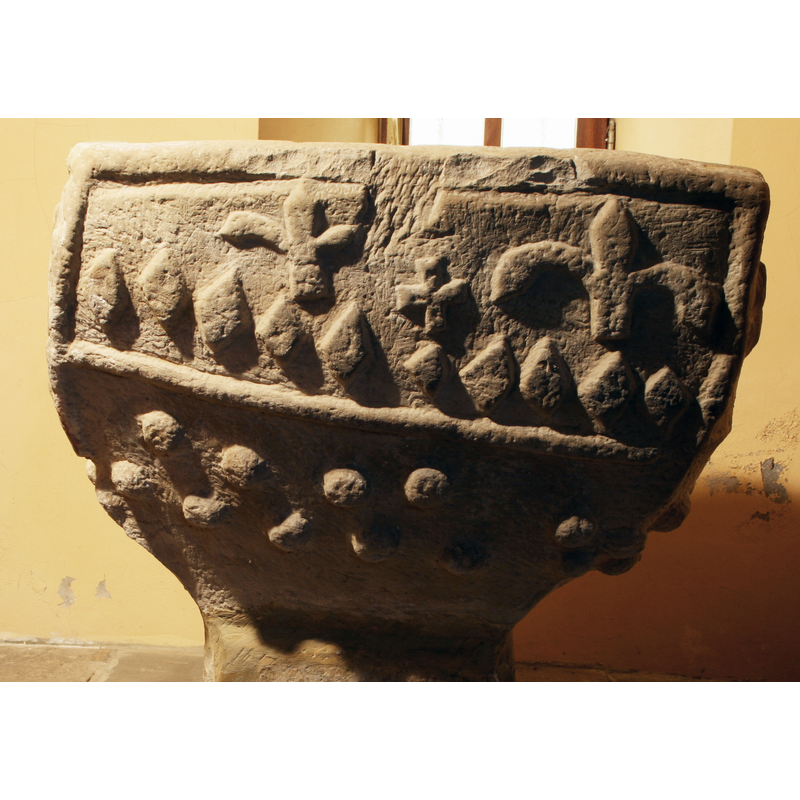
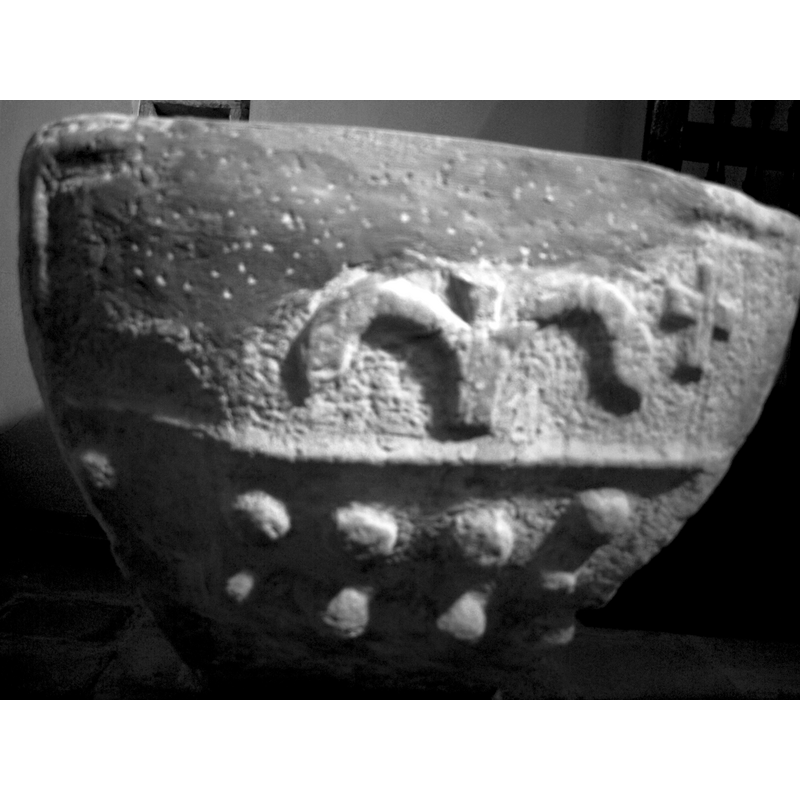

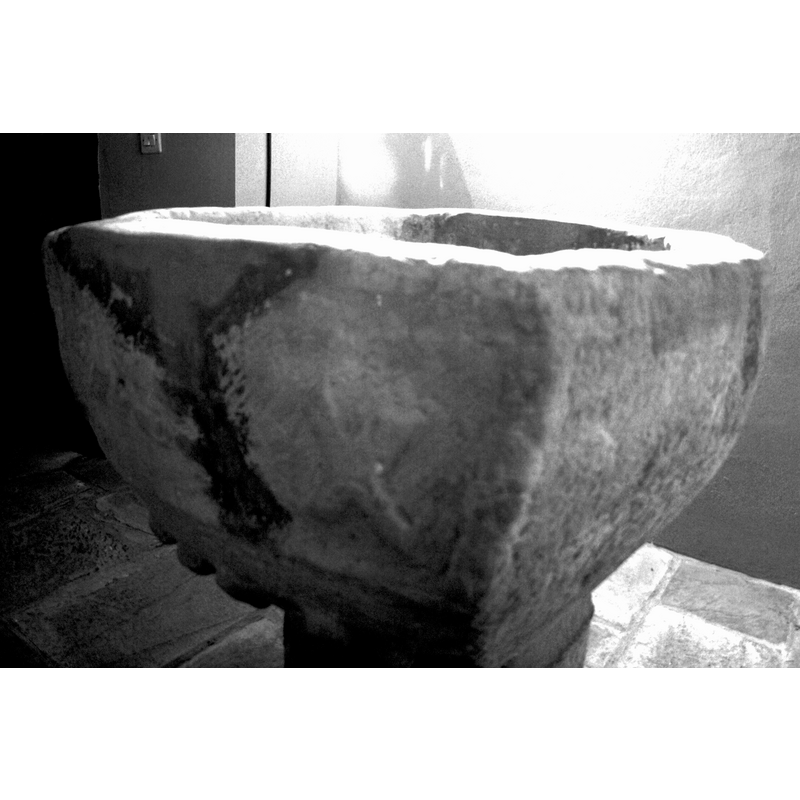
![this back side was originally against the wall [cf. FontNotes]](/static-50478a99ec6f36a15d6234548c59f63da52304e5/compressed/1140420034_compressed.png)


